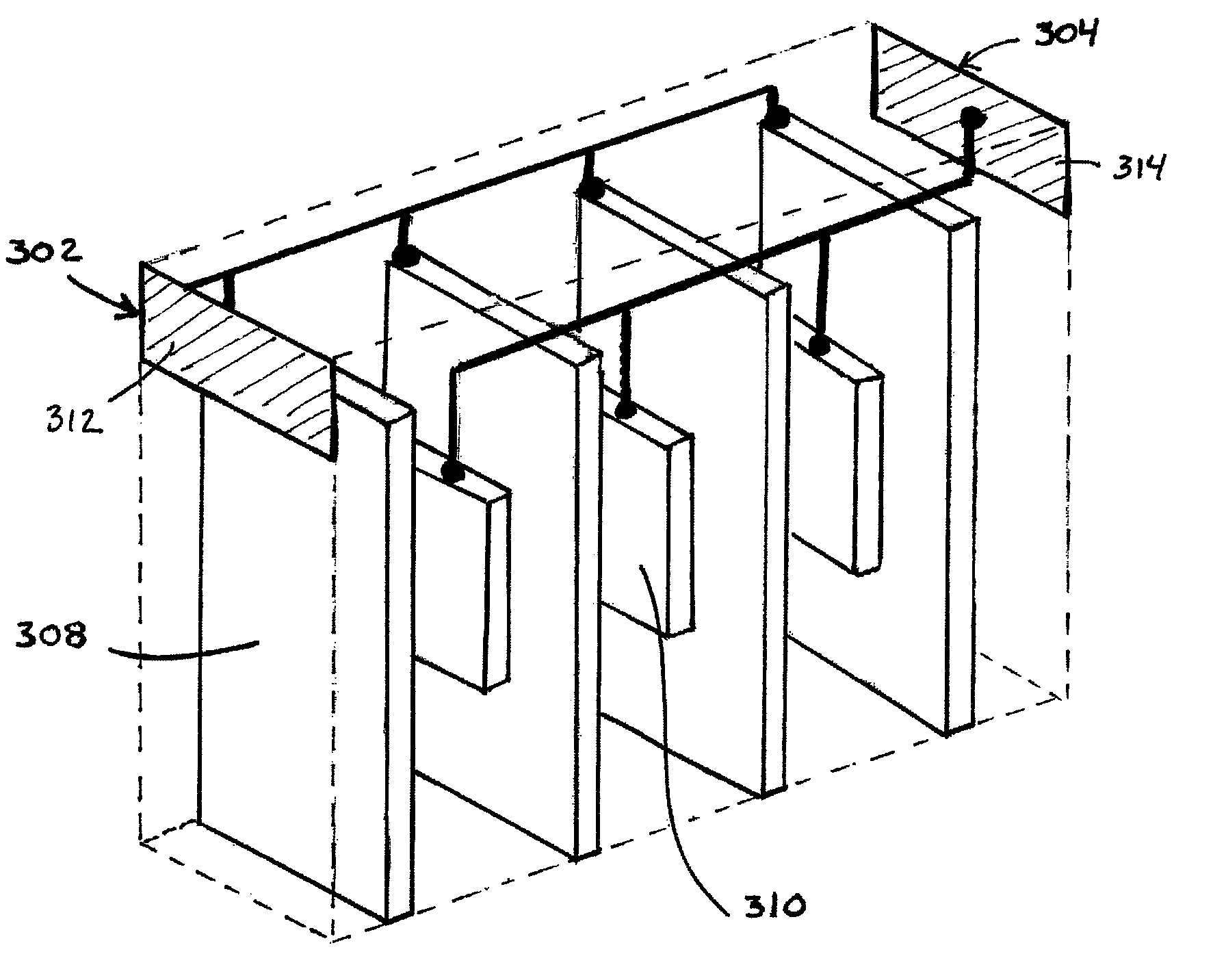Solid state electrochemical gas sensor and method for fabricating same
a gas sensor and solid state technology, applied in the direction of material electrochemical variables, instruments, non-aqueous electrolyte cells, etc., can solve the problems of leaking of liquid electrolyte sensors under certain operating conditions, limited effective lifetime of sensors, and expensive and complex sensor designs. , to achieve the effect of small siz
- Summary
- Abstract
- Description
- Claims
- Application Information
AI Technical Summary
Benefits of technology
Problems solved by technology
Method used
Image
Examples
example 1
[0103]A multilaminate sensor is produced that can be used for the detection of H2S. To fabricate the sensor, a polymer electrolyte is formed that includes 15 wt. % LiClO4 in poly(ethylene oxide) having a molecular weight of 5M. The formulation includes 50 wt. % methanol, 25 wt. % toluene, 1 wt. % plasticizer (SANTICIZER 160, available from the Ferro Corporation, Walton Hills, Ohio, USA), 1 wt. % dispersant (DISPERBYK 103, available from BYK Chemie, Wallingford, Conn., USA) 3 wt. % LiClO4 and 20 wt. % poly (ethylene oxide). The working electrode microbands are formed from a thick-film gold paste and the counter / reference electrode microbands are formed from a thick-film platinum paste. Each paste also includes a small amount of poly(ethylene oxide).
[0104]The layers are stacked and laminated as described above such that the sensor includes a working electrode with 7 microbands and a counter / reference electrode with 6 microbands, each of the counter / reference electrode microbands being...
example 2
[0107]A sensor is fabricated in a substantially identical manner as in Example 1, except that the polymer electrolyte includes 12 wt. % Al2O3 having an average particle size in the range of about 0.9 μm to 2.2 μm. The sensor is tested in a manner similar to Example 1, however in Example 2 the sensor is exposed to an atmosphere containing 5 ppm H2S.
[0108]As can be seen from FIG. 13 and FIG. 14, the sensor has a faster response time as compared to Example 1 and had a total response that was equal to or higher than Example 1, despite the presence of 50 percent less H2S. However, the average linearity of the sensor response (FIG. 14) decreased slightly as compared to Example 1.
example 3
[0109]A multilaminate sensor is fabricated that can be used for the detection of H2S. To fabricate the sensor, a polymer electrolyte is formed that includes 13.6 wt. % LiBF4 in poly(ethylene oxide) having a molecular weight of 5M. The polymer electrolyte formulation is substantially identical to that in Example 1, with LiBF4 being substituted for the LiClO4. The working electrode microbands are formed from a thick-film gold paste and the counter / reference electrode microbands are formed from a thick-film platinum paste. Each paste also includes a small amount of poly(ethylene oxide).
[0110]The layers are stacked and laminated as described above such that the sensor includes a working electrode with 5 microbands and a counter / reference electrode with 4 microbands, each of the counter / reference electrode microbands being disposed between adjacent working electrode microbands.
[0111]The sensor is tested using a 0 mV bias between the electrodes. Specifically, the sensor is exposed to air ...
PUM
| Property | Measurement | Unit |
|---|---|---|
| particle size | aaaaa | aaaaa |
| particle size | aaaaa | aaaaa |
| particle size | aaaaa | aaaaa |
Abstract
Description
Claims
Application Information
 Login to View More
Login to View More - R&D
- Intellectual Property
- Life Sciences
- Materials
- Tech Scout
- Unparalleled Data Quality
- Higher Quality Content
- 60% Fewer Hallucinations
Browse by: Latest US Patents, China's latest patents, Technical Efficacy Thesaurus, Application Domain, Technology Topic, Popular Technical Reports.
© 2025 PatSnap. All rights reserved.Legal|Privacy policy|Modern Slavery Act Transparency Statement|Sitemap|About US| Contact US: help@patsnap.com



